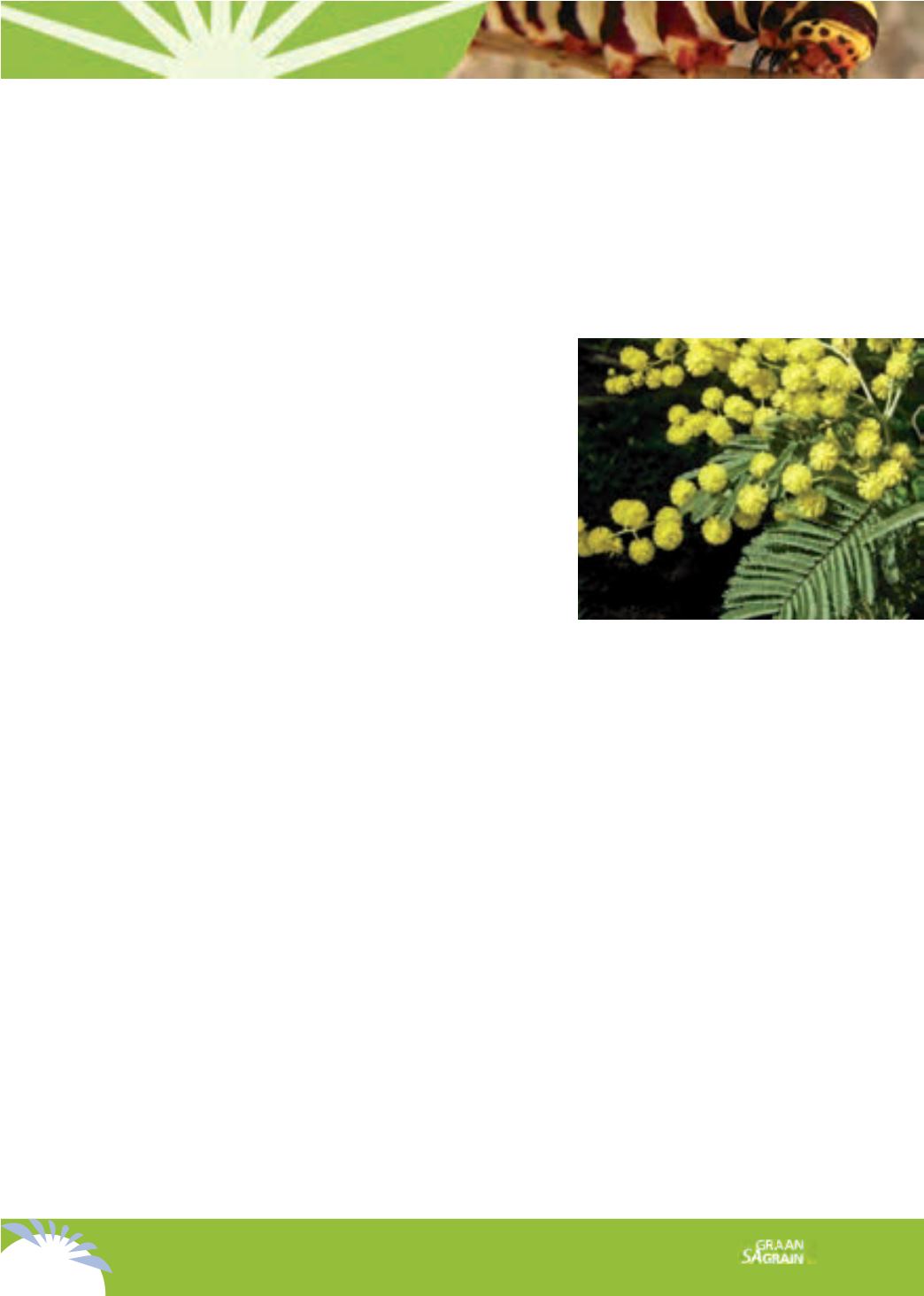

82
GRAANGIDS
2017
GRAIN GUIDE
The negative aspects of the silver wattle include the following: It competes for light, space, water
and nutrients; changes the landscape and habitat; displaces and replaces the indigenous vegeta-
tion; reduces water flow; increases the fire hazard (causes particularly hot fires); reduces the
grazing capacity of pastures and consumes a lot of water. It is not known exactly how many
hectares have already been invaded by this tree, but ac-
cording to literature the invasion is already significant. The
estimated annual water consumption of the silver wattle
is
248 million m
3
.
A biological control agent (seed eater) occurs on this plant
and its effectiveness is described as moderate. Fire stimulates
seed germination and if it is used regularly, it can destroy
the seed reserves in the soil. The negative effects of regular
fires for the soil and other vegetation should be kept in mind,
however. Mechanical control as the only method of control is
not very effective, as the trees sprout aggressively after con-
trol. Various chemicals are registered to control this plant and
they can be used effectively in combination with mechanical
control to get rid of the trees. According to the CARA Act the
silver wattle is a category 1 plant in the Western Cape (it must
therefore be controlled), while it is a category 2 plant in the
rest of South Africa. In the rest of the country this tree there-
fore has economic value, but the plants may occur only in demarcated areas, with the necessary
permission. The NEMBA classification of silver wattle is also as a category 2 plant – it is therefore
an alien species that has the potential to invade, but it also has commercial value and may be
cultivated in demarcated areas with the necessary permits and permission.
References
Anonymous. 2010.
Cara legislation made easy.
The Conservation of Agricultural Resources Act, 1983 (Act No
43 of 1983) (CARA). Department of Agriculture, Forestry and Fisheries.
Anonymous. 2015.
South Africa’s national listed invasive species.
Department of Environmental Affairs.
Anonymous. s.a.
Gums & Bees
- A roadmap for landowners in South Africa.
Henderson, M, Fourie, DMC, Wells, MJ & Henderson, L. 1987.
Verklaarde onkruide en uitheemse indringer-
pante in Suid-Afrika.
Departement van Landbou en Watervoorsiening: Pretoria.
Henderson, L. 2001.
Alien weeds and Invasive plants
. Paarl Printers: Cape Town.
Hoy, L, Stelli, S, Donnelly, M, Schmidt, W, Montgomery, K, Haworth, G, Van Wilgen, B, Ballard-Tremeer, B, Ivey,
P & Klein, H. s.a.
Understanding the impact of invasive plants on water.
Department of Environmental Affairs.
Le Maitre, DC, Versfeld DB & Chapman, RA. 2000.
The impact of invading alien plants on surface water re-
sources in South Africa: A preliminary assessment.
Water SA, 26(3):397-408
Wells, MJ, Balsinhas, AA, Joffe, H, Engelbrecht, VM, Harding, G & Stirton, CH. 1986.
A catalogue of problem
plants in Southern Africa
. Memoirs of the Botanical survey of South Africa, No. 53. Department of Agriculture
and Water Supply: Pretoria.
Five of the ten main alien trees in South Africa
Continued from p. 79
Acacia dealbata
Dr Franci Jordaan, Grazing Division, Technology Development and Transfer, Potchefstroom

















